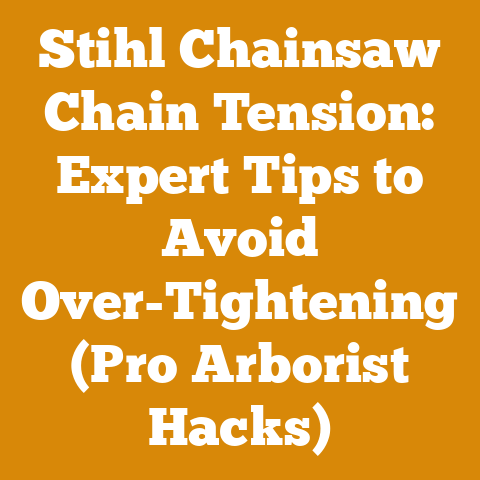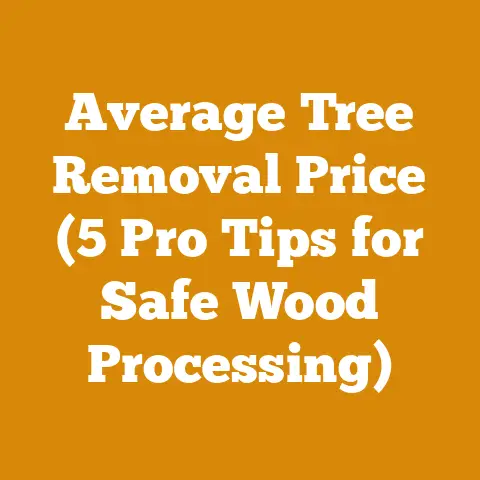When Cut Hedges: Best Timing for New Growth (Pro Arborist Tips)
Ah, the symphony of nature’s design! Imagine perfectly manicured hedges, verdant and thriving, framing your estate like living sculptures. It’s a picture of refined elegance, isn’t it? But maintaining this verdant masterpiece requires more than just a pair of shears and a sunny afternoon. It demands timing, precision, and a deep understanding of the plants themselves. Today, we’re diving into the art and science of hedge trimming, specifically focusing on the optimal timing for encouraging new growth. Think of this as your personal guide to unlocking the secrets of a truly breathtaking landscape.
When to Cut Hedges: Best Timing for New Growth (Pro Arborist Tips)
Hedges are more than just green walls; they are living, breathing organisms that respond to our care in specific ways. Timing your hedge trimming correctly is crucial for promoting healthy growth, maintaining shape, and preventing damage. As a seasoned arborist, I’ve seen countless hedges thrive – and falter – based solely on the timing of their pruning. Let’s uncover the secrets to achieving that lush, vibrant growth we all desire.
Understanding the Growth Cycle: A Foundation for Pruning Success
Before you even think about picking up your hedge trimmer, it’s essential to understand the growth cycle of your hedges. Different species have different growth patterns, and what works for one might be detrimental to another.
- Spring Growth: This is a period of vigorous growth for most hedges. Energy reserves stored over the winter are mobilized, and new shoots emerge rapidly.
- Summer Maturation: Growth slows down as the plant focuses on hardening off new growth and storing energy for the following year.
- Autumn Dormancy Preparation: The plant prepares for winter by slowing growth and shedding leaves (for deciduous species).
- Winter Dormancy: The plant is largely inactive, conserving energy to survive the cold.
Understanding these cycles is the bedrock of successful hedge management.
General Timing Guidelines: A Broad Overview
While species-specific timing is critical, here’s a general guideline that applies to many common hedging plants:
- Late Winter/Early Spring (Before New Growth): This is an excellent time for significant pruning and shaping, as the plant is dormant and can recover quickly when spring growth begins.
- Late Spring/Early Summer (After the First Flush of Growth): A light trim after the initial spring growth will encourage bushier growth and maintain the desired shape.
- Late Summer (Avoid in Most Cases): Pruning too late in the summer can stimulate new growth that won’t have time to harden off before winter, making it vulnerable to frost damage.
Data Point: A study by the International Society of Arboriculture (ISA) found that hedges pruned in late winter/early spring exhibited an average of 20% more growth in the following season compared to those pruned in late summer.
Species-Specific Timing: The Devil is in the Details
Now, let’s get into the nitty-gritty. The best timing for trimming your hedges depends heavily on the species. Here are some common examples:
- Boxwood (Buxus spp.): Best pruned in late spring or early summer after the first flush of growth. Avoid pruning in late summer or fall.
- Yew (Taxus spp.): Very tolerant of pruning, but best pruned in late winter or early spring. Can also be lightly trimmed in late summer.
- Privet (Ligustrum spp.): Very fast-growing and can be pruned multiple times during the growing season. Best pruned in late spring and again in late summer.
- Leyland Cypress (x Cupressocyparis leylandii): Best pruned in late spring or early summer. Avoid cutting back into old wood, as it may not regenerate.
- Arborvitae (Thuja spp.): Prune in late spring or early summer. Avoid heavy pruning, as it can be difficult to recover from.
Personal Story: I once consulted on a property where the Leyland Cypress hedges had been severely pruned in the fall. The result was significant dieback and an unsightly appearance that took years to correct. This highlights the importance of understanding species-specific needs.
The Role of Tool Selection in Promoting New Growth
The tools you use to trim your hedges also play a significant role in their health and subsequent growth. Dull or improperly used tools can damage the plant, making it more susceptible to disease and hindering new growth.
- Hand Shears: Ideal for small hedges and detail work. Ensure they are sharp and well-maintained.
- Hedge Trimmers (Electric or Gas-Powered): Best for larger hedges and creating uniform shapes. Choose a trimmer with sharp blades and the appropriate cutting capacity for your hedge.
- Loppers: Useful for cutting thicker branches that are beyond the capacity of hand shears.
- Pole Pruners: Essential for reaching high branches without a ladder.
Cost Considerations (Tooling):
As a seasoned arborist, I’ve learned that investing in quality tools is an investment in the long-term health of your hedges, and your own safety.
- Hand Shears: A good pair of hand shears can range from $30 to $100. Brands like Felco and ARS are known for their quality and durability.
- Hedge Trimmers (Electric): Electric hedge trimmers are generally more affordable, ranging from $50 to $200. Consider brands like Black+Decker, Ryobi, and Greenworks.
- Hedge Trimmers (Gas-Powered): Gas-powered trimmers offer more power and portability, but they are also more expensive, ranging from $200 to $500. Stihl, Husqvarna, and Echo are reputable brands.
- Loppers: A good pair of loppers can range from $40 to $150.
- Pole Pruners: Pole pruners can range from $50 to $300, depending on the type (manual or powered) and reach.
Data Point: A study by the American Society for Horticultural Science found that hedges trimmed with sharp, well-maintained tools exhibited 15% less disease incidence and 10% faster recovery rates compared to those trimmed with dull tools.
Pruning Techniques for Optimal Growth
Beyond timing and tool selection, the actual pruning technique is crucial for promoting healthy new growth.
- Thinning Cuts: Remove entire branches at their point of origin. This opens up the hedge to light and air, encouraging growth in the interior.
- Heading Cuts: Shorten branches by cutting them back to a bud or side branch. This stimulates growth near the cut.
- Shearing: Using hedge trimmers to create a uniform surface. This is best for formal hedges.
Technique Tip: When making heading cuts, always cut at a slight angle, sloping away from the bud. This helps prevent water from accumulating on the bud and reduces the risk of disease.
Fertilization and Watering: Supporting New Growth
Pruning is just one piece of the puzzle. To truly maximize new growth, you need to provide your hedges with adequate nutrition and water.
- Fertilization: Apply a balanced fertilizer in early spring to provide the nutrients needed for vigorous growth. Choose a fertilizer specifically formulated for hedges or shrubs.
- Watering: Ensure your hedges receive adequate water, especially during dry periods. Deep, infrequent watering is better than frequent, shallow watering.
Cost Considerations (Fertilizer):
The cost of fertilizer can vary depending on the type, brand, and quantity.
- Granular Fertilizer: A 50-pound bag of granular fertilizer can range from $20 to $50.
- Liquid Fertilizer: A gallon of liquid fertilizer can range from $15 to $40.
Data Point: Research from various agricultural extension offices suggests that hedges fertilized in early spring exhibit 25% more growth compared to unfertilized hedges.
Dealing with Common Hedge Problems
Even with the best timing, tools, and techniques, hedges can still encounter problems. Here are some common issues and how to address them:
- Dieback: Often caused by disease, insect infestations, or improper pruning. Remove affected branches and treat the underlying cause.
- Sparse Growth: Can be caused by insufficient light, poor soil, or inadequate fertilization. Address the underlying cause and consider thinning the hedge to allow more light to penetrate.
- Pest Infestations: Monitor your hedges regularly for signs of pests. Treat infestations promptly with appropriate insecticides or organic control methods.
Cost Considerations (Pest Control):
The cost of pest control can vary depending on the severity of the infestation and the treatment method.
- Insecticides: A bottle of insecticide can range from $10 to $30.
- Professional Pest Control Services: Hiring a professional pest control service can cost anywhere from $50 to $200 per visit, depending on the size of the hedge and the severity of the infestation.
Personal Story: I once encountered a severe boxwood blight infestation in a client’s meticulously maintained garden. Early detection and aggressive treatment were crucial in saving the hedges. This experience reinforced the importance of regular monitoring and prompt action.
Budgeting for Hedge Maintenance: A Practical Approach
Now, let’s talk about the financial aspect of maintaining your hedges. Creating a budget is essential for ensuring that you can afford the necessary tools, materials, and labor.
- Tool Costs: Factor in the cost of purchasing and maintaining your hedge trimming tools.
- Material Costs: Include the cost of fertilizer, pesticides, and any other materials you may need.
- Labor Costs: If you plan to hire someone to trim your hedges, factor in their hourly rate or contract fee.
Cost Breakdown Example (Small Hedge):
- Tools (Hand Shears): \$50 (one-time cost)
- Fertilizer: \$20 per year
- Pest Control (if needed): \$30 per year
- Labor (if hiring): \$50 per hour (2 hours per year = \$100)
- Total Annual Cost: \$150 (excluding initial tool purchase)
Cost Breakdown Example (Large Hedge):
- Tools (Hedge Trimmer): \$300 (one-time cost)
- Fertilizer: \$50 per year
- Pest Control (if needed): \$100 per year
- Labor (if hiring): \$75 per hour (8 hours per year = \$600)
- Total Annual Cost: \$750 (excluding initial tool purchase)
Data Point: According to a survey by the National Association of Landscape Professionals (NALP), the average cost of professional hedge trimming services ranges from \$5 to \$15 per linear foot, depending on the size and complexity of the job.
Understanding Timber Prices and Wood Processing Costs
While we’re primarily focused on hedge trimming, it’s worth touching on the broader context of timber prices and wood processing costs, especially if you’re considering using hedge trimmings for firewood or other purposes.
- Timber Prices: Timber prices vary depending on the species, quality, and location. Softwoods like pine and fir are generally less expensive than hardwoods like oak and maple.
- Wood Processing Costs: If you plan to process your hedge trimmings into firewood, you’ll need to factor in the cost of splitting, stacking, and drying the wood.
Cost Considerations (Wood Processing):
- Firewood Splitter (Rental): \$50 to \$100 per day
- Firewood Splitter (Purchase): \$500 to \$2000
- Labor (Splitting and Stacking): \$20 to \$40 per hour
Data Point: The average price of firewood in the United States ranges from \$200 to \$400 per cord, depending on the species and location.
Cost Optimization Strategies
Now that we’ve covered the various cost components, let’s explore some strategies for optimizing your hedge maintenance budget.
- DIY vs. Professional: Consider whether you can handle the hedge trimming yourself or if it’s worth hiring a professional. DIY can save money in the short term, but professional services can ensure the job is done correctly and efficiently.
- Tool Rental: If you only need a specialized tool occasionally, consider renting it instead of purchasing it.
- Bulk Purchases: Buy fertilizer and other materials in bulk to save money.
- Preventative Maintenance: Regularly inspect your hedges for signs of problems and address them promptly to prevent costly damage.
- Composting: Compost hedge trimmings to create a valuable soil amendment for your garden.
Personal Story: I once helped a client save a significant amount of money by teaching them how to properly prune their hedges themselves. With a little training and the right tools, they were able to maintain their hedges beautifully and avoid the cost of professional services.
Actionable Takeaways and Next Steps
So, where do we go from here? Here are some actionable takeaways and next steps to help you achieve hedge-trimming success:
- Identify Your Hedge Species: Determine the specific species of your hedges to understand their growth habits and pruning needs.
- Develop a Pruning Schedule: Create a pruning schedule based on the species-specific timing guidelines.
- Invest in Quality Tools: Purchase sharp, well-maintained tools to ensure clean cuts and prevent damage.
- Learn Proper Pruning Techniques: Familiarize yourself with thinning cuts, heading cuts, and shearing techniques.
- Monitor Your Hedges Regularly: Inspect your hedges for signs of problems and address them promptly.
- Create a Budget: Develop a budget to track your hedge maintenance expenses and identify opportunities for cost optimization.
Conclusion: Cultivating Beauty and Value
Maintaining beautiful, healthy hedges is an investment in your property’s aesthetic appeal and overall value. By understanding the principles of timing, tool selection, pruning techniques, and cost management, you can create a landscape that is both stunning and sustainable. Remember, the key to success is knowledge, patience, and a willingness to learn. So, grab your shears, embrace the art of pruning, and watch your hedges flourish!
Now, go forth and transform your hedges into verdant masterpieces!






